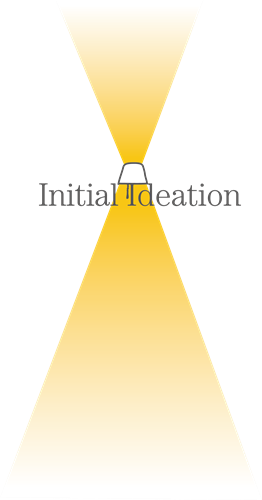Most of our conversations with leaders will at some point focus on energy. It could be their personal energy and resilience for leading change – ‘I just need the energy’ or ‘I never seem to switch off and recharge’. It may be how to motivate and engage the energy of the people who work for and with them - ‘If we spent as long talking about solutions rather problems and work rather than social life, we’d have sorted it ages ago!’ Alternatively, it might be how to ‘manage’ the people who sap energy and will give a thousand reasons why change won’t work, or why they are not prepared to make personal behavioural changes - ‘I’ve always done it this way…’ –sometimes described as organisational ‘mood hoovers’.
Energy management is a critical leadership skill, both personally and within teams. There are some simple steps you can take to manage your energy and help create energy for others. Radcliffe identifies 4 types of energy - physical, emotional, intellectual and spiritual. There needs to be balance with all four, otherwise we experience an energy deficit which can unbalance our effectiveness and, in extreme circumstances, cause energy crisis.
“Your first and foremost job as a leader is to manage your own energy, and help manage the energy of those around you.”
- Peter Drucker
At ICE, we love the metaphors that Andy Cope uses in ‘The Art of Being Brilliant’ about ‘shining a light’ with energy and creating energy for others as opposed to ‘casting a shadow’ for yourself and others. Our work with individuals through coaching, team effectiveness and leadership development helps people to see themselves how other people see and experience their energy and, most importantly, what they can do to take control and manage their energy resources.

There are some very practical and tactical actions that you can take to you manage your energy and resources, such as:
- Working out when your energy is highest - are you a lark or an owl? Focus on important or demanding activities when you’re most energised
- Knowing what refreshes your energy and planning these activities/treats into your routine
- Identifying what saps your energy and working out how you can manage/mitigate/avoid this.
We find people who make transformational changes are those who are able to connect to their purpose, their drivers, their ‘why’ or their purpose. Typically, they have more energy and are also more resilient. In their busy daily lives, they are people who are able to be clear about what is important and are able to link their choices about where and how they spend their energy. We call this values-driven behaviour connected to purpose. The personal application also works for leading teams; after all, we are all human.
“I’m convinced that the most effective competitors in the 21st century will be the organisations that learn how to harness the emotional energy of employees.”
- Noel Tichy
Culture Map, developed by ICE, provides insight using people’s assessment of preferred, current and future desired culture. It looks at how much energy they are able to bring to their work, dependent on the alignment of culture and what is called ‘cultural entropy’ i.e. what stops things and people changing and ‘gets in the way’.
Based on Abraham Maslow’s Hierarchy of Needs and Barrett’s work on Human Consciousness, we know that if people do not feel that some of the more basic needs are being addressed, they cannot move to be transformational - affecting and leading change - often connected to energy.
This quick assessment can be a really helpful start to the conversation and journey around ‘What do we need to do to help people have more energy and bring more of themselves to the challenges?”
Culture Map works in a range of different settings and sectors with powerful results.
If you would like to learn more about connecting your energy and motivating and managing energy in others, or how Culture Map can help, please contact us at leadership@icecreates.com
 collective voice
collective voice